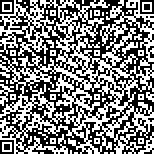| 摘要: |
| [摘要] 目的 通过测定激素敏感型原发性肾病综合征(SSNS)患者外周血T细胞亚群(CD3+CD4+、CD3+CD8+、CD4/CD8)及调节性T淋巴细胞(Treg,CD4+CD25+highCD127low),探讨其在病情不同阶段的动态变化趋势及临床意义。方法 选取在该科初治的原发性肾病综合征(PNS)患者,经标准剂量激素治疗(1 mg·kg-1·d-1)8周后,根据病情缓解与否筛选出SSNS组患者35例,正常对照组30例。患者分别于治疗前(W0)、治疗4周(W4)、治疗8周(W8)常规进行实验室检查[包括尿蛋白定量、血白蛋白(Alb)、血肌酐(Scr)、胆固醇(Cho)、甘油三酯(TG)等],采用流式细胞术检测T淋巴细胞亚群及Treg。结果 (1)实验室指标比较:SSNS组患者W4、W8分别与W0比较,尿蛋白、Cho、TG及Scr均显著下降(P<0.05),Alb显著升高(P<0.05)。W8与W4比较,Alb升高(P<0.05),其余指标两组间比较差异无统计学意义(P>0.05)。(2)SSNS组与正常对照组比较:SSNS组患者W0与正常对照组比较,CD4%、CD4/CD8有升高趋势,而Treg及Treg/CD4轻微下降,但差异均无统计学意义(P>0.05)。W4与正常对照组比较,CD4%、CD4/CD8比值升高(P<0.05),Treg/CD4比值降低(P<0.05)。W8与正常对照组比较,CD4%、CD8%、CD4/CD8比值、Treg、Treg/CD4比值的差异均无统计学意义(P>0.05)。(3)SSNS组治疗期间动态变化:SSNS组W8与W4比较,CD4%下降,CD8%升高,CD4/CD8比值下降,Treg及Treg/CD4均明显升高(P<0.05),以上指标与正常对照组比较差异无统计学意义(P>0.05)。结论 SSNS患者存在T淋巴细胞数量异常,T淋巴细胞亚群及Treg/CD4比值失调,且此异常的免疫状态当糖皮质激素治疗4周时仍然持续存在,治疗8周达临床完全缓解后得以改善。Treg可能在SSNS患者的病情缓解中发挥作用。 |
| 关键词: 肾病综合征 糖皮质激素 调节性T淋巴细胞 T淋巴细胞亚群 免疫 |
| DOI:10.3969/j.issn.1674-3806.2013.07.04 |
| 分类号:R 692 |
| 基金项目:广西自然科学基金资助项目(编号:桂科自0991214) |
|
| Changes and clinical significance of T lymphocyte subsets and regulatory T cells in peripheral blood of patients with steroid-sensitive nephrotic syndrome |
|
PENG Xiao-mei,YE Kun, XIONG Li-jia, et al.
|
|
Department of Nephrology, the People’s Hospital of Guangxi Zhuang Autonomous Region, Nanning 530021, China
|
| Abstract: |
| [Abstract] Objective To detect changes of T lymphocyte subsets (CD3+CD4+,CD3+CD8+,CD4/CD8) and regulatory T cells(Treg,CD4+CD25+highCD127low) in adult patients with steroid-sensitive nephrotic syndrome(SSNS),and investigate dynamic change trend and clinical significance in different stages of primary nephrotic syndrome (PNS).Methods Thirty-five SSNS patients enrolled in SSNS group were inpatients in our department first treated with prednisone (1 mg·kg-1·d-1) for eight weeks, according to clinical remission of PNS. Thirty normal persons were served as healthy control group. Regular laboratory examinations were detected before treatment (W0 group), 4-week treatment(W4 group ) and 8-week treatment (W8 group), such as proteinuria, blood albumin(Alb), serum creatinine(Scr), cholesterol(Cho) and triglycerides(TG). T lymphocyte subsets and Treg were detected by flow cytometry.Results (1)Compared with W0 group, proteinuria, Cho, TG and Scr decreased significantly(P<0.05),while Alb increased significantly(P<0.05) in W4 group and W8 group. Alb in W8 group was higher than that of W4 group(P<0.05).There were no significant differences in above other indexes between W4 group and W8 group (P>0.05).(2)Compared with control group,CD4% and CD4/CD8 ratio increased, while Treg and Treg/CD4 ratio decreased slightly in SSNS group before treatment, but there were no significant differences(P>0.05). Compared with control group, CD4% and the ratio of CD4/CD8 increased(P<0.05), while the ratio of Treg/CD4 decreased significantly (P<0.05) in W4 group. After 8-week treatment, there were no significant differences of CD4%, CD8%, CD4/CD8 ratio, Treg, and Treg/CD4 ratio(P>0.05), compared with control group.(3)There were dynamic changes during the treatment in SSNS group. Compared with W4 group, CD4% and CD4/CD8 ratio were lower(P<0.05), while CD8%,Treg and Treg/CD4 ratio were higher(P<0.05)in W8 group. But there were no significant differences between W8 group and control group.Conclusion There are changes of T cell populations, T lymphocyte subsets and Treg/CD4 ratio imbalance in PNS adult patients. The disorder immune state even sustained after 4-week treatment of glucocorticoid. It ameliorated after 8-week treatment of glucocorticoid with complete remission. Regulatory T lymphocytes may play an important role in the remission of patients with SSNS. |
| Key words: Nephritic Syndrome Glucocorticoid Regulatory T lymphocytes(Treg) T lymphocyte subsets Immune |

